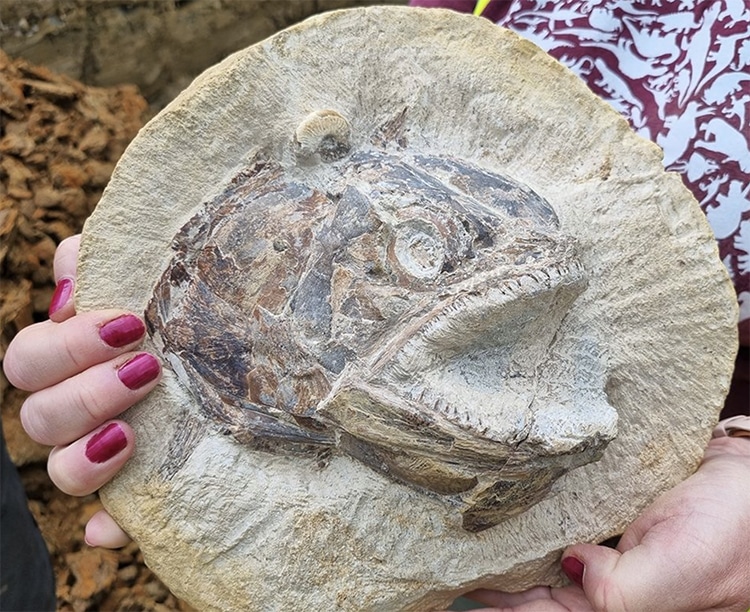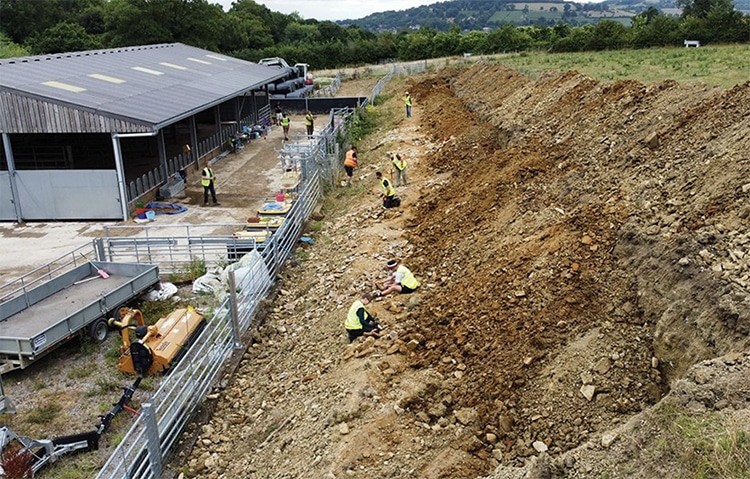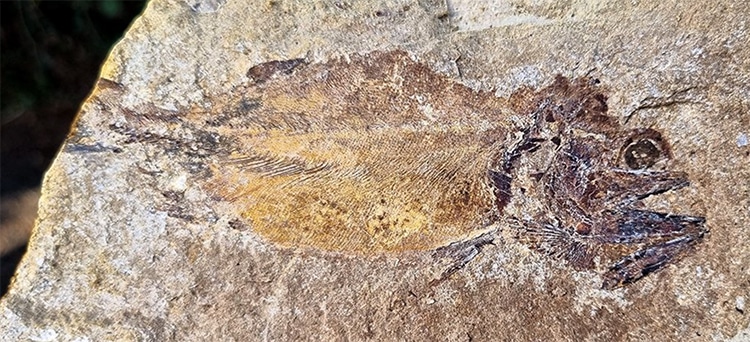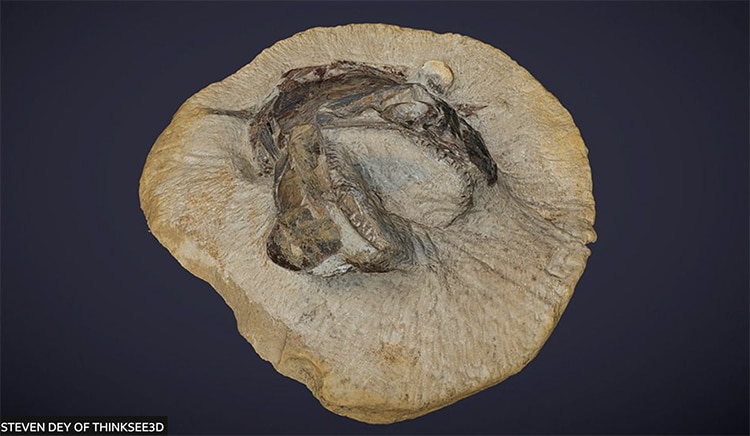However, British fossil hunters Neville and Sally Hollingworth discovered something less expected: a 183-million-year-old fossilized fish.
The Hollingworths are known for finding fossils, including mammoth skeletons.
The crew carefully excavated more limestone nodules, cracking them open to expose more marine fossils.

The Pachycormus fossile. (Photo:Dr. Dean Lomax)
Fish, squid, and the bones of two ichthyosaurs appeared.
The latter were large, dolphin-like reptiles that roamed ancient seas.
Fossilized wood and insects suggest the ancient waters were not far from land.

The farm in Gloucestershire where the fossil trove was discovered. (Photo:Steve Dey)
We’ve got the whole food chain, paleontologistDr.
Dean Lomax, said.
So this Pachycormus would have been eating the smaller fish and squids.

Another fossilized fish complete with soft tissue. (Photo:Dr. Dean Lomax)
And then, the ichthyosaurs would have been eating the Pachycormus.
The Court Farm site allows scientists to do modern research with fresh, in-situ material.
Excavated fossils will be exhibited locally for all to see.

A 3D digital model of the fossil. (Photo:Steven Day/Thinksee3D)
British fossil hunters discovered a Jurassic fish fossil on a cow farm.
The farm in Gloucestershire where the fossil trove was discovered.
Another fossilized fish complete with soft tissue.
A 3D digital model of the fossil.